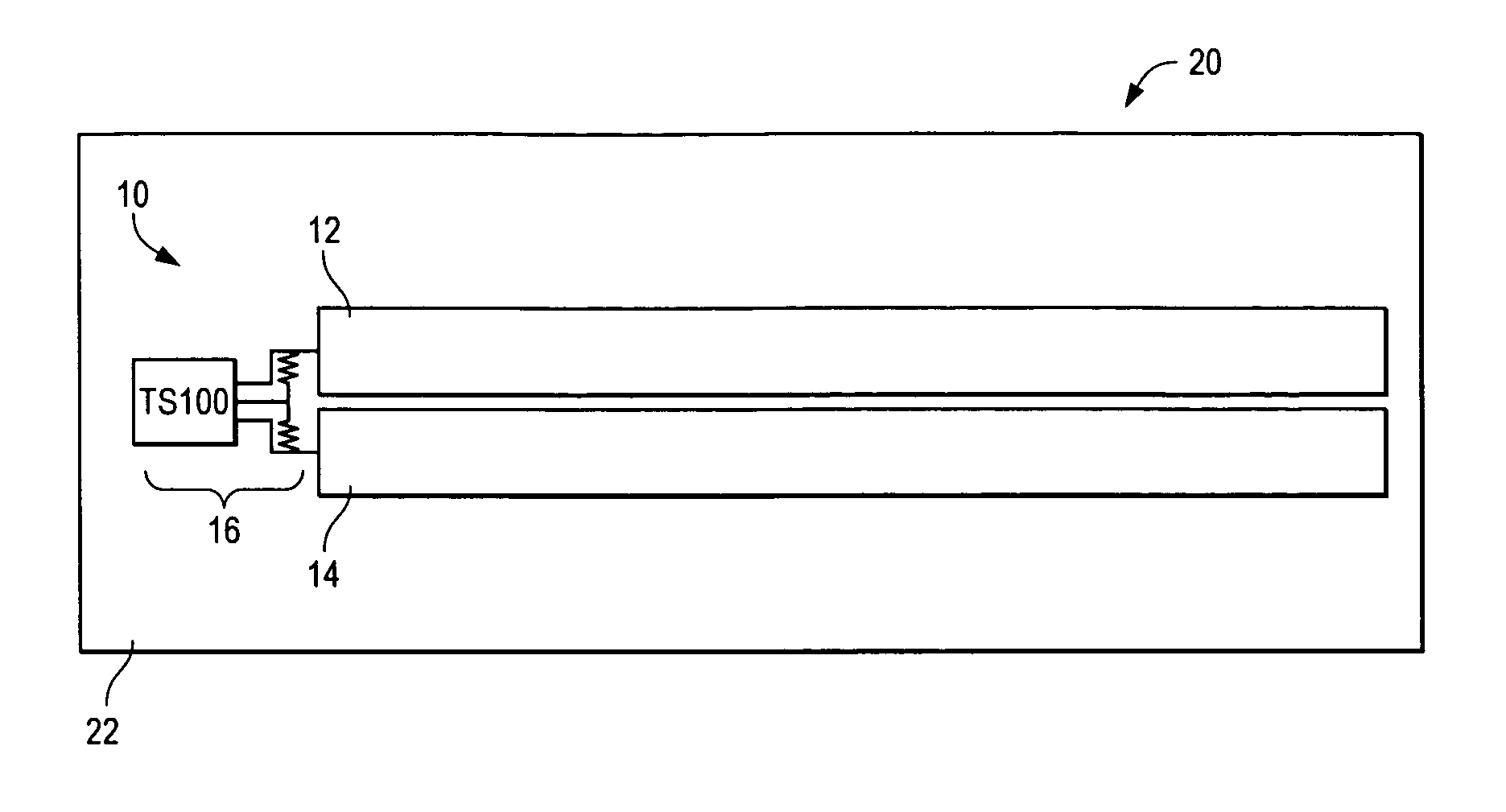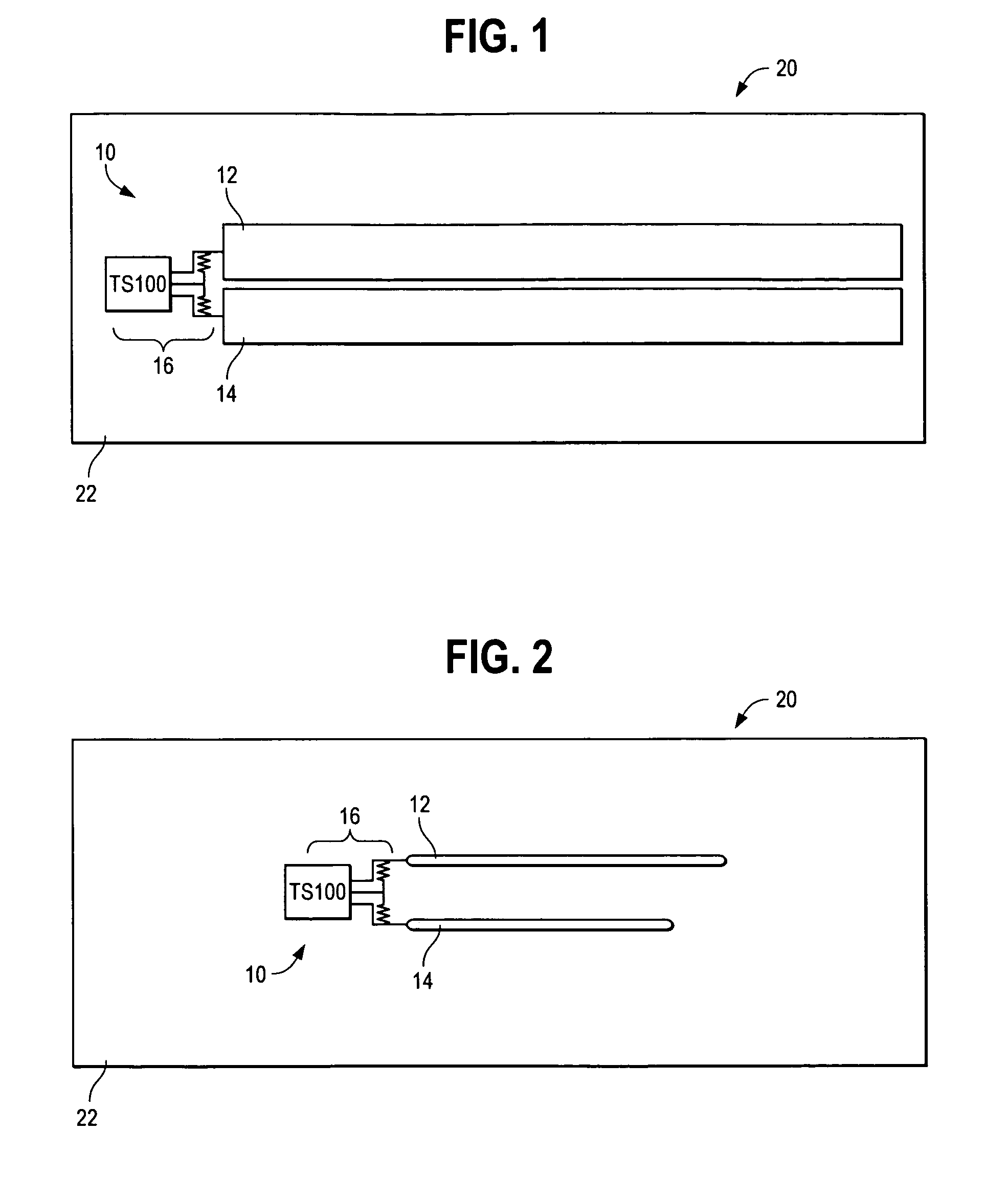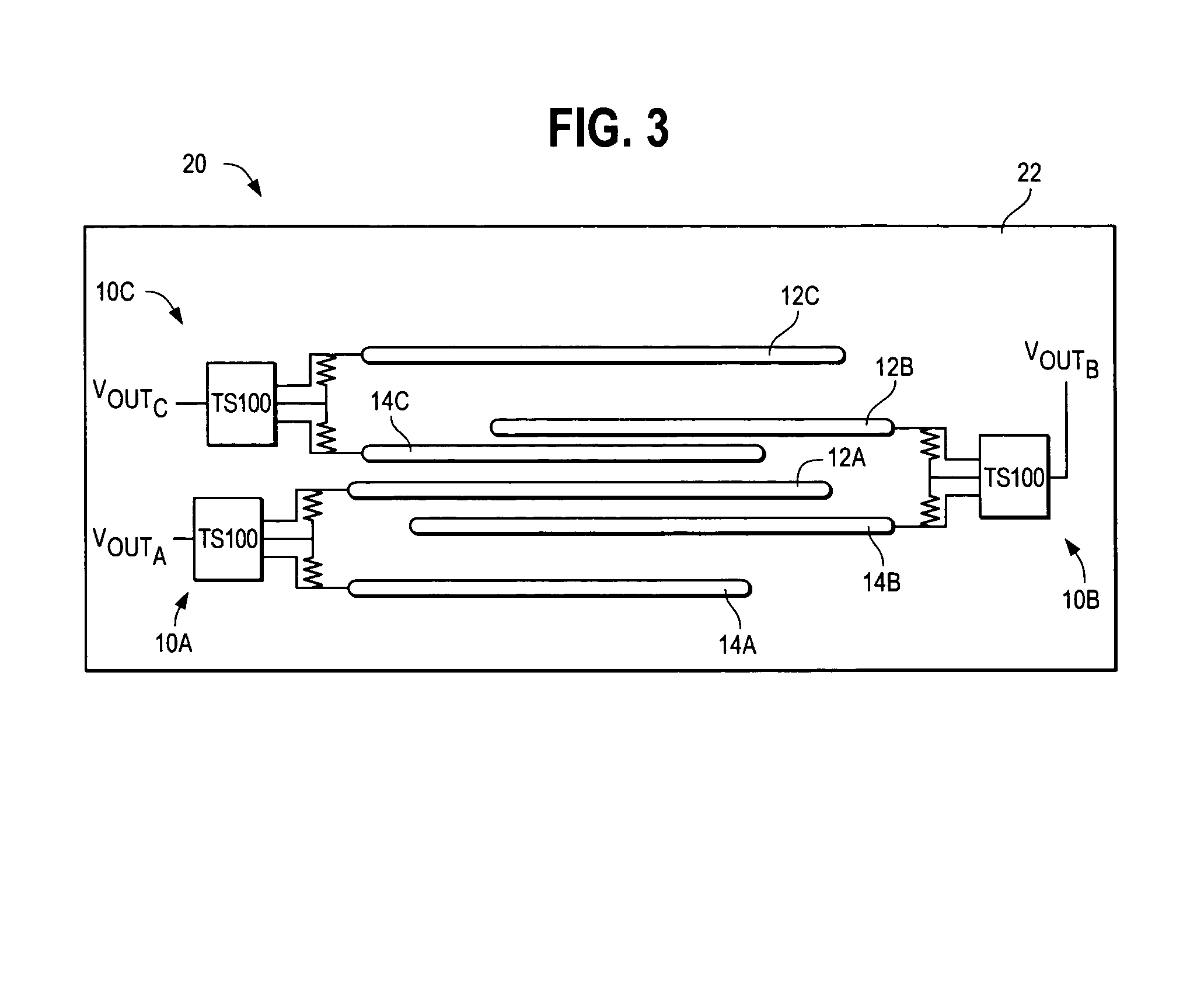Proximity sensor for level sensing
a level sensor and proximity sensor technology, applied in the field of level sensing, can solve the problems of increasing the potential for fluid spillage, inability to readily be used remotely, and general inability to provide remote level indication
- Summary
- Abstract
- Description
- Claims
- Application Information
AI Technical Summary
Benefits of technology
Problems solved by technology
Method used
Image
Examples
Embodiment Construction
[0013]FIG. 1 illustrates a field effect sensor 10 located on the side wall 22 of a tank 20 containing a fluid, such as the gas tank of an automobile. In other embodiments, tank 20 could contain multiple fluids or a powder. Preferably, sensor 10 is located on the outside of tank 20, but also could be located on the inside of tank 20. Alternatively, sensor 10 could be embedded within the side wall 22 of tank 20.
[0014]Sensor 10 includes first and second, substantially parallel, electrodes 12,14 coupled to a control circuit 16. Preferably, control circuit 16 is embodied as the control circuit provided with the TS100 sensor available from TouchSensor Technologies, LLC of Wheaton, Ill. Many of the design and operating principles of the TS100 sensor are described in U.S. Pat. Nos. 6,230,282 and 6,713,897 and related U.S. patent application Ser. Nos. 10 / 272,377 10 / 725,908, the disclosures of which are incorporated herein by reference.
[0015]Electrodes 12,14 differ from conventional sensor el...
PUM
 Login to View More
Login to View More Abstract
Description
Claims
Application Information
 Login to View More
Login to View More - R&D
- Intellectual Property
- Life Sciences
- Materials
- Tech Scout
- Unparalleled Data Quality
- Higher Quality Content
- 60% Fewer Hallucinations
Browse by: Latest US Patents, China's latest patents, Technical Efficacy Thesaurus, Application Domain, Technology Topic, Popular Technical Reports.
© 2025 PatSnap. All rights reserved.Legal|Privacy policy|Modern Slavery Act Transparency Statement|Sitemap|About US| Contact US: help@patsnap.com



